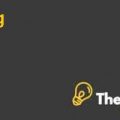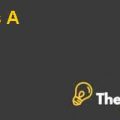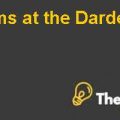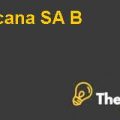SUN Brewing (B) Case Study Help
DCF Valuation
DCF valuation method is used in order to determine the true value of the company. DCF valuation method is applied by two ways. Firstly, it is calculated on management projection and then perform on the basis of historical growth. In order to perform DCF valuation, the two assumptions has been taken. WACC is assumed as 12% while the terminal growth rate is assumed as 5%. By adding and subtracting depreciation, capital expenditure and working capital in EBIT, we get the cash flows.net present value is calculated by applying WACC on cash flows. Net present value through historical growth and management projections are $1,781,511 and $2,795,933 respectively. Moreover, by deducting debt from the present value which is 119,557, the enterprise values are $1,661,954 and $2,676,376 respectively. Per share price through historical growth and management projections are 14.26 and 22.96 respectively.
Share value
According to the management projections from 2005 to 2010, the value of the share of SUN Interbrew is 22.96 dollars.Whereas, according to the analyst projections, the value of the share of SUN Interbrew is 14.26 dollars. As the case illustrates the importance of the voting power within the company, which leads to the assessment of the percentage value of class A (Non-Voting) and class B (Voting). In 2004, the total shares value was 451.1 million dollars, which consisted of class A and class B shares. From the results, Class A held 76% of the shares while Class B held the rest during the selected period.
After the analysing of the total shares of the company, it has been found that the class A’s shares had a greater value than Class B’s share, which is considered the non-voting power share where the shareholder can only receive the dividends instead the involvement in the operational decisions of the company.
Voting premium
The date is collected from the historical share performance of Sun Interbrew, to distinguish the difference between voting rights shares and non-voting rights shares through voting premiums analysis. It is also to determine the expected impact of the changes in these two shares from 2005 to 2010.
In the past performance of the company, it has been analysed that almost 60 to70% of share power represented by class B belonged to Khemka family,due to the involvement in the company’s operational activities and so therefore, the company reflected the family dominance.
On the otherhand, the projected results show that the margin of class B would decrease in future due to the withdrawal of shares or exit from the company by Khemka family, because of less quantity of shares within the operations as compared to the Interbrew and Alpha group. Therefore,an increase in non-voting shareholders is expected, who only invest for return of dividend instead of involving in the operations of the business.
Khemka family’s stake in SUN Interbrew
As per the evaluation of the market share price of the Khemka family, the Class A share price was 6.2 in the year 2004. Similarly, the class B share price was up to an approximate of 13.3. Considering the future projections of the share price of both the classes, it is evaluated to demonstrate a significant growth from the year 2005 to 2010 of Class A share price i.e. 8.1, 10.6, 13.9, 18.2 (2008-2010) respectively. Whereas Class B share price is evaluated to demonstrate an increase from 13.3 to 17.9, 24.1, 32.5, and 43.7 from the year 2005-2010. On the other hand, the ratio of change in Class A share price and Class B share price were estimated to be 31 percent and 35 percent....................
This is just a sample partical work. Please place the order on the website to get your own originally done case solution.











